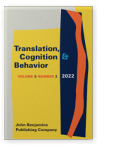Vol. 5:2 (2022) ► pp.275–299
Self-care strategies of professional community interpreters
An interview-based study
Previous studies on affective dimensions of interpreting suggest that the emotionally-charged conversations or complex topics encountered by interpreters in community settings may be stressful and emotionally taxing, leaving interpreters prone to vicarious trauma and retraumatization. The assumed psychological risk associated with these conditions may point to the importance of self-care in community interpreting practice and its role in building interpreters’ resilience. Drawing on semi-structured interviews with 20 professional community interpreters, this article aims to identify self-care strategies adopted in community interpreting. By using Posluns & Gall’s (2020) framework, we focus on six main self-care domains, i.e., awareness, balance, flexibility, physical health, social support, and spirituality. The study documents how community interpreters utilize self-care practice to mitigate stress inherent in the profession.
Article outline
- 1.Introduction
- 2.The notion of self-care
- 3.Self-care in interpreting studies
- 4.Methods
- 4.1Participants
- 4.2Procedure
- 4.3Materials
- 5.Results
- 5.1Awareness
- 5.2Balance
- 5.3Flexibility
- 5.4Physical health
- 5.5Social support
- 5.6Spirituality
- 6.Discussion
- 7.Conclusion
- Acknowledgements
- Notes
-
References
